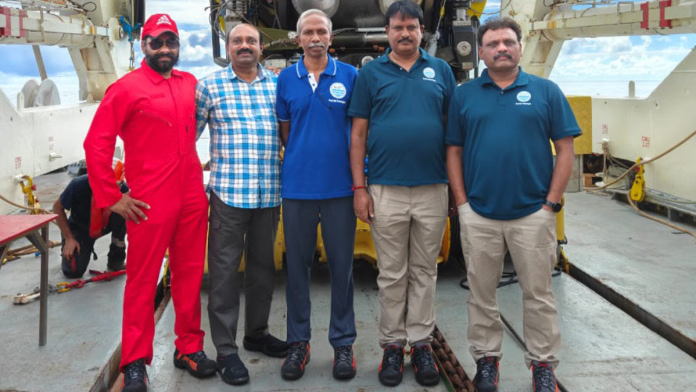India’s Historic 5,000-Metre Deep-Sea Dive

India’s Historic 5,000-Metre Deep-Sea Dive
India achieved a landmark feat in deep-sea exploration when two aquanauts, Raju Ramesh and Jatinder Pal Singh, from the National Institute of Ocean Technology (NIOT), descended to depths of 4,000–5,000 metres in the Atlantic Ocean on 5 August 2025. The mission, part of a collaboration between India’s NIOT and France’s IFREMER, provided crucial experience ahead of India’s own Samudrayaan Deep Ocean Mission, slated for 2027.
Key Highlights
- Mission Overview:
- Conducted aboard the French vessel Nautile off Portugal’s coast.
- Five Indian engineers participated, with Ramesh and Singh as the first Indians to reach 4,000 m and 5,000 m respectively.
- Each aquanaut spent nine hours underwater, learning submersible operations, life support checks, and robotic arm usage.
- Technological Significance:
- Submersible tested under extreme pressures (5,000 m depth), joining a global elite of fewer than 30 people worldwide who have reached such depths.
- The experience contributes to development and operational readiness of Matsya 6,000, the indigenous submersible for Samudrayaan.
- NIOT engineers gained hands-on skills in navigation, emergency systems, acoustic communication, and seabed sampling.
- Strategic & Scientific Importance:
- The mission strengthens India’s Blue Economy capabilities, fostering deep-sea research, seabed exploration, and marine technology.
- Provides foundational experience before Samudrayaan, expected to carry three aquanauts to 6,000 m in the Indian Ocean.
- Reflects India’s vision to match progress in space (Gaganyaan) and deep oceans, contributing to the narrative of a technologically advanced and self-reliant nation (Viksit Bharat).
- Cost-Efficient Approach:
- The mission expenditure was approximately ₹1–2 crore, demonstrating India’s focus on cost-effective scientific exploration.
- Collaborative approach with France optimized operational learning without heavy financial burden.
Conclusion:
Ramesh and Singh’s historic dives symbolize India’s leap in deep-sea capabilities, complementing its space ambitions. For UPSC aspirants, this event demonstrates the integration of science, technology, policy, and international cooperation in advancing India’s strategic and developmental goals in oceanography.
Updated - 14 August, 2025 07:24 pm | The Print